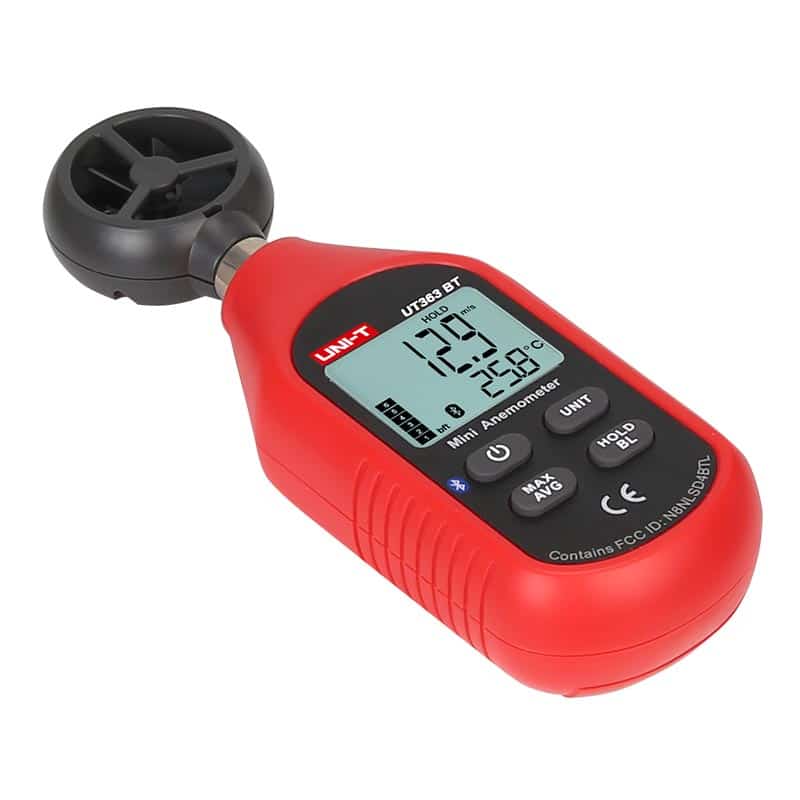Contrasting Digital and Mechanical Anemometers: Which is Right for You?
Contrasting Digital and Mechanical Anemometers: Which is Right for You?
Blog Article
Anemometers Revealed: Understanding Their Importance in Ecological Surveillance and Precaution
The role of anemometers in ecological monitoring and safety and security actions is commonly underestimated, yet their relevance is undeniable. From meteorology to air travel security, anemometers play a vital duty in supplying exact information that educates decision-making procedures and enhances overall security.
Background of Anemometers
The evolution of anemometers can be traced back to the ancient human beings where rudimentary wind determining gadgets were very first used. These very early wind dimension devices laid the structure for the development of extra innovative anemometers in time. One of the earliest known anemometers was the hemispherical mug anemometer invented by Leon Battista Alberti in the 15th century. This style included four hemispherical mugs that collected wind power, giving a measurement of its strength based on the speed of rotation.
Over the years, improvements in modern technology led to the advancement of more contemporary anemometers, consisting of ultrasonic anemometers and laser Doppler anemometers, providing enhanced precision and efficiency in gauging wind rate and instructions. The history of anemometers showcases an impressive trip of innovation and progress in the area of weather forecasting.
Kinds of Anemometers
Throughout the area of meteorology, numerous kinds of anemometers have been developed to precisely determine wind rate and direction. Sonic anemometers use ultrasonic signals to determine wind speed and direction precisely. Hot-wire anemometers run based on the principle that the cooling effect of wind on a warmed wire is symmetrical to the wind speed.
Applications in Meteorology
Having gone over the numerous sorts of anemometers used in weather forecasting for determining wind speed and instructions, it is vital to explore their sensible applications in the area. Anemometers play a critical function in weather forecasting by giving real-time and accurate data on wind conditions (anemometer). Meteorologists make use of anemometers to keep an eye on wind rate and instructions to forecast weather condition patterns, problem cautions for serious weather condition events like tornados, storms, and twisters, and examine weather for aeronautics safety and security
In weather forecasting, anemometers help in recognizing neighborhood and regional wind patterns, which are important for anticipating weather condition adjustments and establishing climatic patterns. These tools are also made use of in research study to study microclimates, city warmth islands, and air contamination dispersion. Furthermore, anemometers are utilized in agriculture to enhance plant administration techniques, such as watering and pesticide application, based on wind problems.
Importance in Aviation Safety
An essential element of guaranteeing aviation safety and security depends on the precise monitoring of wind problems making use of anemometers. Anemometers play an essential function in air travel by giving real-time data on wind rate and direction, helping pilots in making educated decisions during flight, take-off, and touchdown. Unpredictable and strong winds can substantially influence aircraft operations, making it necessary for aviation authorities to depend on precise wind dimensions to guarantee the safety of travelers and staff.

In the dynamic environment of air travel, where even minor modifications in wind speed and direction can have profound results, anemometers stand as crucial tools for promoting protected and secure air travel.
Role in Environmental Research Study
Just More Info how do anemometers add to innovations in ecological study? Anemometers play an essential role in environmental research study by supplying important information on wind rate and direction. This info is crucial for understanding different climatic procedures, such as air contamination dispersion, weather condition patterns, and environment change. By accurately determining wind attributes, anemometers aid researchers examine the activity of toxins airborne, assess the effect of industrial discharges, and forecast the spread of impurities in the environment.


Verdict
In verdict, anemometers have actually played a vital function in ecological surveillance and security steps. Understanding the value of anemometers is necessary for precisely measuring wind rate and direction, which is important for predicting weather condition patterns, making sure safe aeronautics operations, and conducting ecological studies.
One of the earliest known anemometers was the hemispherical mug anemometer created by Leon Battista Alberti in the 15th century. click for more Over the years, developments in technology led to the advancement of more contemporary anemometers, consisting of ultrasonic anemometers and laser Doppler anemometers, using raised precision and efficiency in gauging wind speed and instructions. Hot-wire anemometers operate based on the concept that the cooling result of wind on a heated wire is proportional to the wind rate. Meteorologists utilize anemometers to monitor wind rate and direction to forecast climate patterns, concern warnings for severe weather events like cyclones, tornados, and tornadoes, and assess atmospheric problems for aeronautics safety.
Understanding the relevance of anemometers is important check this site out for properly gauging wind rate and instructions, which is important for predicting climate patterns, guaranteeing risk-free aviation procedures, and carrying out environmental research studies. (anemometer)
Report this page